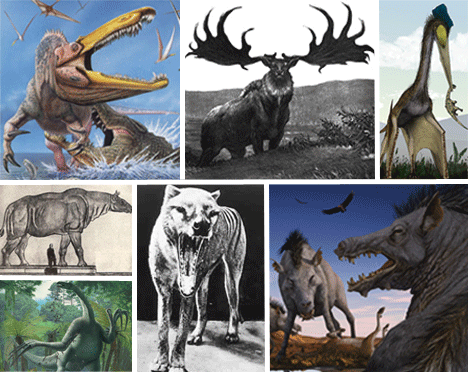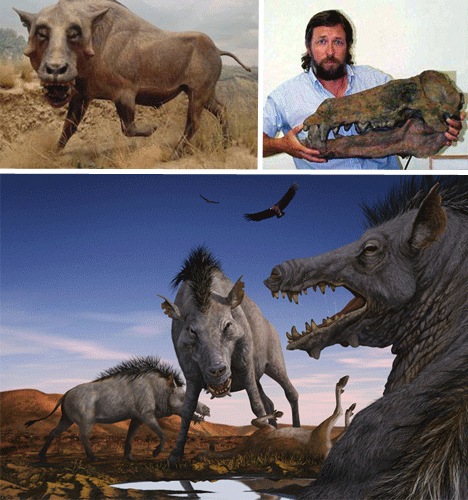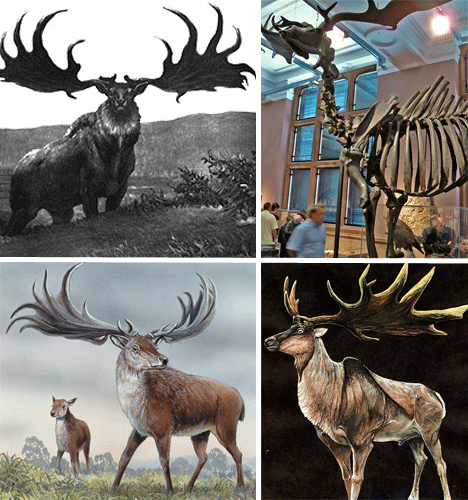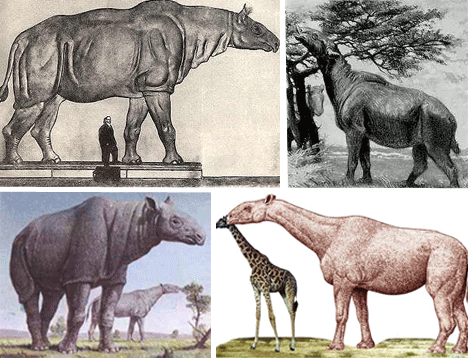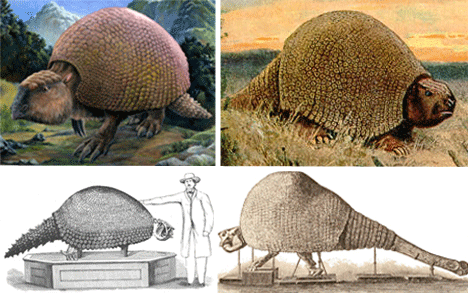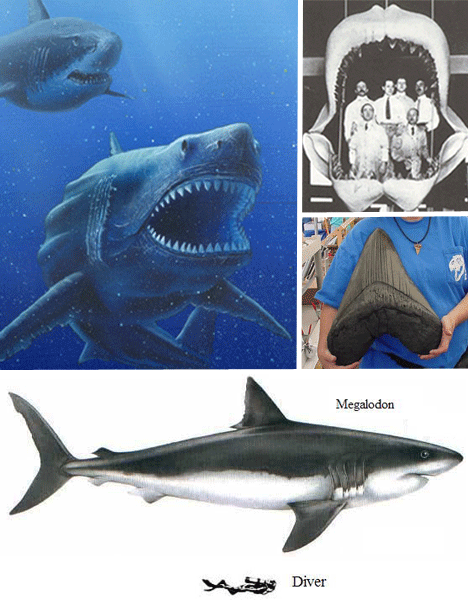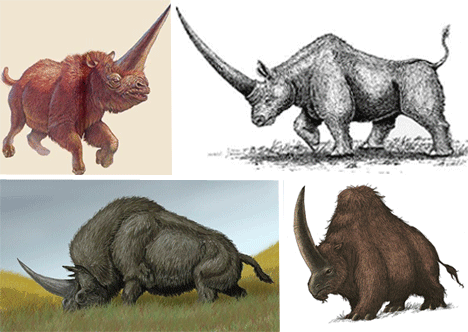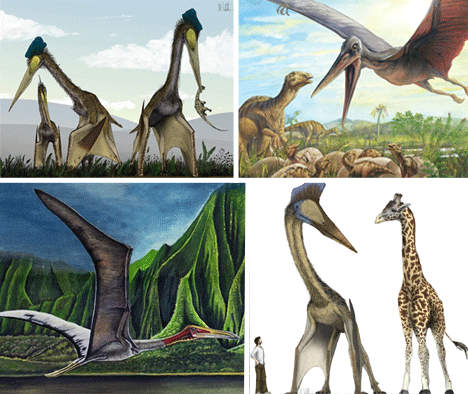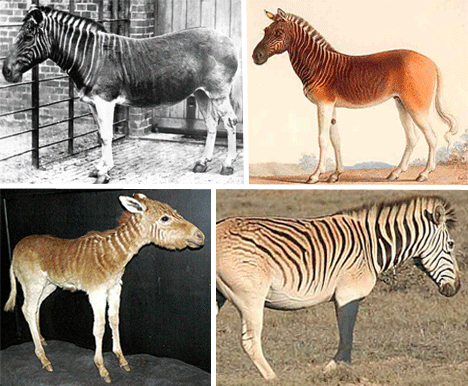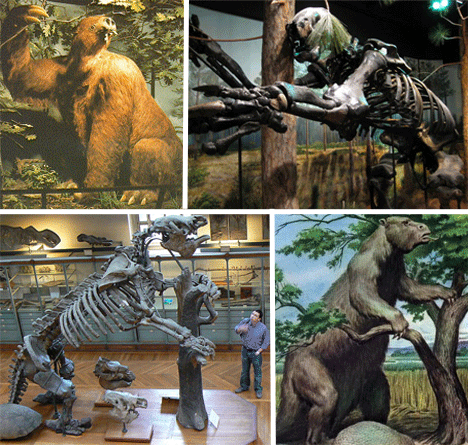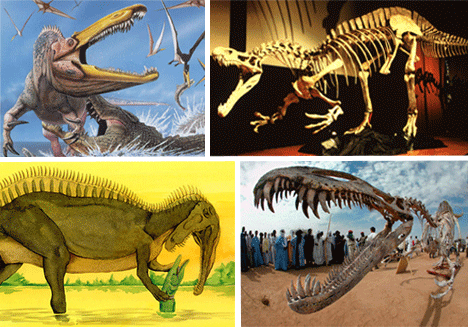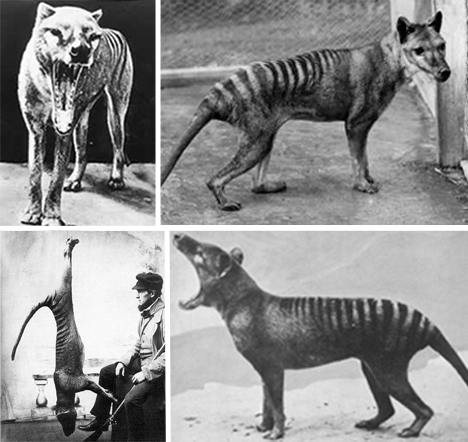Modern design is aerodynamic, functional, and aesthetically pleasing. Old designs seem blocky and industrial, bulky and ill suited for their function, so they’re discarded. Just as taste and aesthetics consistently change, so do the requirements of survival. Animals have gone from being small and reptilian to large and furry, to gigantic and reptilian, on and on, and back in forth, in a cycle that left many creatures in the dust. Here are 12 of the most intriguing animal lines to hit a dead end.
(Images via fossil treasures, nps, science blogs)
Nicknamed “Hell Pigs” or “Terminator Pigs,” Entelodonts terrorized the forests and plains for upwards of 20 million years. Terminator Pigs thrived on live prey, but they wouldn’t sneer at a rotting carcass or tubers and vegetation. These hogs were like mini bulldozers, heavy and powerful, weighing over 900 pounds each.
(Images via wild deer ireland, zh1yong, nature, lilian nattel)
The Irish Elk went extinct nearly 5,000 years ago, and carried the distinction of having the widest antlers of any known species. At a whopping 12 feet wide, their antlers were an intimidating feature that required a powerful body as a frame. They stood 7 feet tall at the shoulders, and some experts belief their extinction was a result of antlers grown out of control; like the modern bodybuilder, their form was attractive to females, but ill suited for the requirements of everyday living.
(Images via 50birds, cameron, dumbdave, big game)
An 18 foot tall ancestor of the rhinoceros, Baluchitherium was an incredibly massive creature with pillars for legs. Its entire existence revolved around eating leaves with its 4 foot long head. Like a crane designed to move a chair, it was ridiculously overbuilt. Nature agreed, and the Baluchitherium went extinct nearly 20 million years ago.
(Images via wikimedia, ceibal, skelemitz, science blogs)
Glyptodons were the forerunners of the modern armadillo; equally armored, but much, much larger. About the size of a small car, these lumbering beasts would mill around the banks of lakes and rivers munching on roots and small plants. They were able to swing their heavy, bony, tail in defense, but their main protection was the thickness of their all-encompassing shells.
(Images via bristol, sharkfriends, cracked, greatsouth)
Megalodon would swallow a great white shark like we devour salmon. This nightmare was around 60 feet long, and its maw contained nearly 300, 7 inch long teeth. Its fearsome mouth was intimidating enough, without the fact that it weighed in at a horrendous 100 tons. This was the true king of the sea.
(Images via avph, chinese unicorn, carnivora, victor rivas)
Elasmotherium is an ancestor of the rhinoceros, crowned with a 2 meter long horn, and covered in a layer of thick fur. Despite their size and weight, they were able to gallop at high speed. These animals were herbivores, but had no issue dealing out damage with their piercing horn.
(Images via mark witton, uni graz, lilien sternus, pterosaurs)
Hatzegopteryx was a pterosaur (winged lizard), with a wingspan of 12 meters. It soared over the landscape looking for opportunities to use its 2 meter long beak to scoop up anything out in the open. If these gliding beasts existed today, they would snatch a grown adult like the modern heron scoops up a fish.
(Images via pikaia, dull neon, petermaas, quagga project)
The quagga was a relative of the zebra that had the appearance of a mix between a zebra and a horse. The species died out within the past 100 years, but in an attempt to correct the errors of our past, the Quagga Project is attempting to recreate the species through an intense breeding program. The last photo is the most recent descendant of the new quagga line.
(Images via monkey fur, robot attack, gamespot, louder funier)
The modern day sloth is like a lethargic monkey, so slow in movement that they commonly grow moss across their backs. This lack of speed is a new development. The sloth used to be a giant, able to move from plant to plant on four enormous limbs, and cradle an entire tree in its arms. While the modern day sloth relies on its position high in the treetops for protection, its ancient cousin relied solely on its gigantic, 17 foot high frame.
(Images via luisrey, uchicago, prehistoric illustrated, el mundo en fotos)
Suchomimus was a crocodile-like creature that haunted Africa 112 million years ago. Few examples of this lithe and lengthy monster have been found, but each specimen has been remarkably complete, allowing scientists to accurately estimate a full adult length measuring in at an incredible 40 feet.
(Images via olenski, suddenlaunch3, saysoon, fairservicenz)
The Therizinosaurus hefted 8 foot long forelegs with claws nearly 4 feet long. It carried an impressive arsenal considering its only source of food was vegetable matter. Scientists are split as to whether it was more bird-like or reptilian in appearance, but its fantastic size is undeniable.
(Images via lahaiseslair, cryptomundo, wikimedia, kidcyber)
The Thylacine, nicknamed the “Tasmanian Tiger,” disappeared within the past 100 years. It held the distinction of being the largest carnivorous marsupial. Despite being classified as extinct, several sightings are reported every year… though none of them have been proven.
